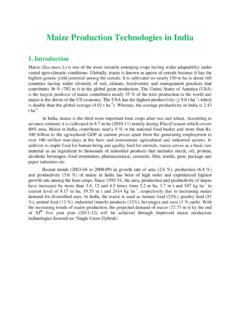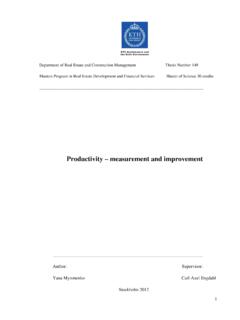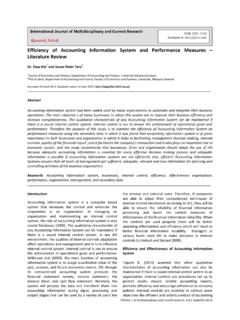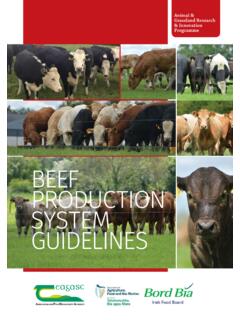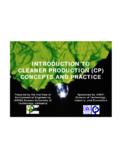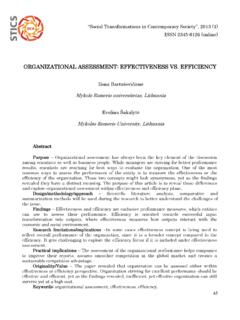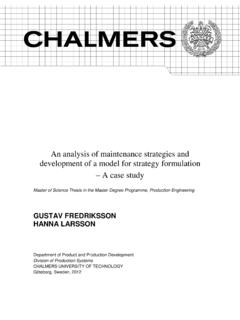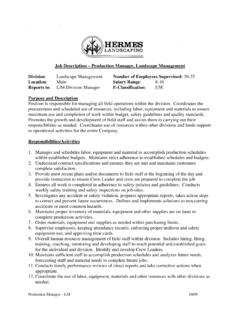Transcription of COSTS OF BIODIESEL PRODUCTION - globalbioenergy.org
1 COSTS OF BIODIESEL PRODUCTION P r ep ar ed for : Energy efficiency and Conservation Authority By: John Duncan May 2003 2 Summary BIODIESEL can be manuf act ured as a h i gh qual it y fuel for comp ression ignit ion engines and is widely accepted, p articularly when blended into conv entional diesel fue l, when p roduced t o sp ecificat ions already est ablished in Europe and Nort h America.
2 It has a lower en ergy cont ent t han convent ional diesel and a volumetric fuel consump tion increase of about 6% with BIODIESEL is ty pical of rep orted data. BIODIESEL consists of the methy l esters of the fatty acid components of the trigly cerides that make up most animal fats and vegetable oils. It is p roduced by transesterificat ion, in which the fat s/oils are react ed wit h met hanol t o form t he BIODIESEL methyl esters and glycerol, the latter bein g sold as a by p roduct. Commercial biod iesel p roduction technology is available with plants of up to 100,000 tonnes p er y ear having b eing constructed.
3 The process technology is well underst ood alt hough t here are some variant s on t he t echnologi es used. Although this technology continues to evolve, y ields of BIODIESEL are alr eady near theoretical limits. Technology for the p re-treatment of fats and oils and the purification of the methy l esters and gly cerol is well established and commonly used outside the BIODIESEL industry . It is p ossible t o use either t allow or ve get able o il in some com merc ial p lant but not in ot hers, t he p rincipal limit at ion being t he different p re-t reat ment requirements of tallow and oil.
4 The central transesterification p rocess is unlikely to be a constraint in interchangeability with modern two stage p lants, p articularly when convert ing v e get able o ils in a p lant designed t o p rocess t allow. The full cap it al cost of a feedst ock cap acity of 70,000 t onne p er year is likely t o cost $20-30 million. About 120,000 tonnes of tallow are exp orted from New Zealand annu ally and cou ld be used as feedstock. The unit cap ital cost of smaller plant s, wit h capacit ies less t han 10,000 t onnes p er year, and t he cap abilit y t o be associated with sources of tallow or oil p roduction, are likely to be 2 to 4 times high er.
5 Prices of t he p rincipal biodi esel f eedst ocks, t allow and m et hanol, fluct uat e signif icant ly , as does that of byp roduct gly cerol and t he convent ional diesel fuel, which will b e t he refer ence price for biod iesel p roduced. T hese market p rice fluctuations are gener ally not inter-related, although there may be some weak link between those of tallow and gly cerol, and have a major influen ce of the likely profit ability of a BIODIESEL plant . Gly cerol p rices can be impact ed by t he PRODUCTION of BIODIESEL as the volumes involved a high in relation to the existing market.
6 Cap it al cost s are not sufficiently well defined t o est ablish a l ink bet ween cost s and product quality/p rice, although COSTS of p re-treatment/p urification is less than the 3 uncertainty in cap ital COSTS exp ressed above. Up gradin g of gly cerol to obtain high er prices is commonp lace, although not alway s economic, p articularly with smaller plant s and low p revailin g gly cerol p rices.
7 Tallow comp rises about 80% of the gross cost of p roduction of BIODIESEL (excludin g gly cerol byp roduct sales). The v ariation in the tallow cost comp onent during the 1990 s was gr eater than the more p redictable cap ital and operating COSTS , which comp rised less than 15% of the gross cost of p roduction. During the p eriod 1992 to 2000 the net cost of BIODIESEL p roduction from tallow in a lar ge plant, includ in g inco me from gly cerol, would hav e been significantly more than the p rice of conventional diesel in each year, e xcep t only in 2000, and would have aver aged about 52 cents p er litre.
8 T he high cost of veget able o ils lik ely would push the BIODIESEL cost to over $ per litre. COSTS in a small p lant would be about 10 cents p er litre higher than the tallow cost, although, when usin g waste cookin g oil, this additional cost would be lar gely offset by the cheaper feedstock. BIODIESEL is gener ally rep ort ed as being mor e cost ly t han convent ional di esel fu el, although it is not infrequently quoted as bein g comp etitive, as it wil l be if prevailing fluctuat ions in feedst ock/product p rices are favourable.
9 Using the dist ribution of t hese prices over t he last t wenty years, less t han 5% of cost s benefit analy ses based on fixed p rices over the p roject life will show a positive result in p roducing BIODIESEL . If the feedstock/p roduct p rices are varied each y ear, as will be t he case in realit y , BIODIESEL p roduct ion will alway s be more expensive than conventional diesel. This differential is about 25 cents p er litre or 27 cent s per litre if the add itional 6% fuel consump tion with BIODIESEL is included in the calcu lation.
10 Future advances in p roduction technology , y ields and capital COSTS will have a limit ed imp act on closing t he different ial as y ields are already high and c ap it al COSTS comp rise only a small p art of the total COSTS of BIODIESEL p roduction. The imp ending carbon tax credit of $25 p er tonne of carbon dio xide will contribute about 6 cents p er litre to this differential. Similarly , a further 12 cents per litre could be taken from the diff erential if the estimated reduction of p ollution cost s arising from BIODIESEL use were t o be fact ored int o fuel p rices.

